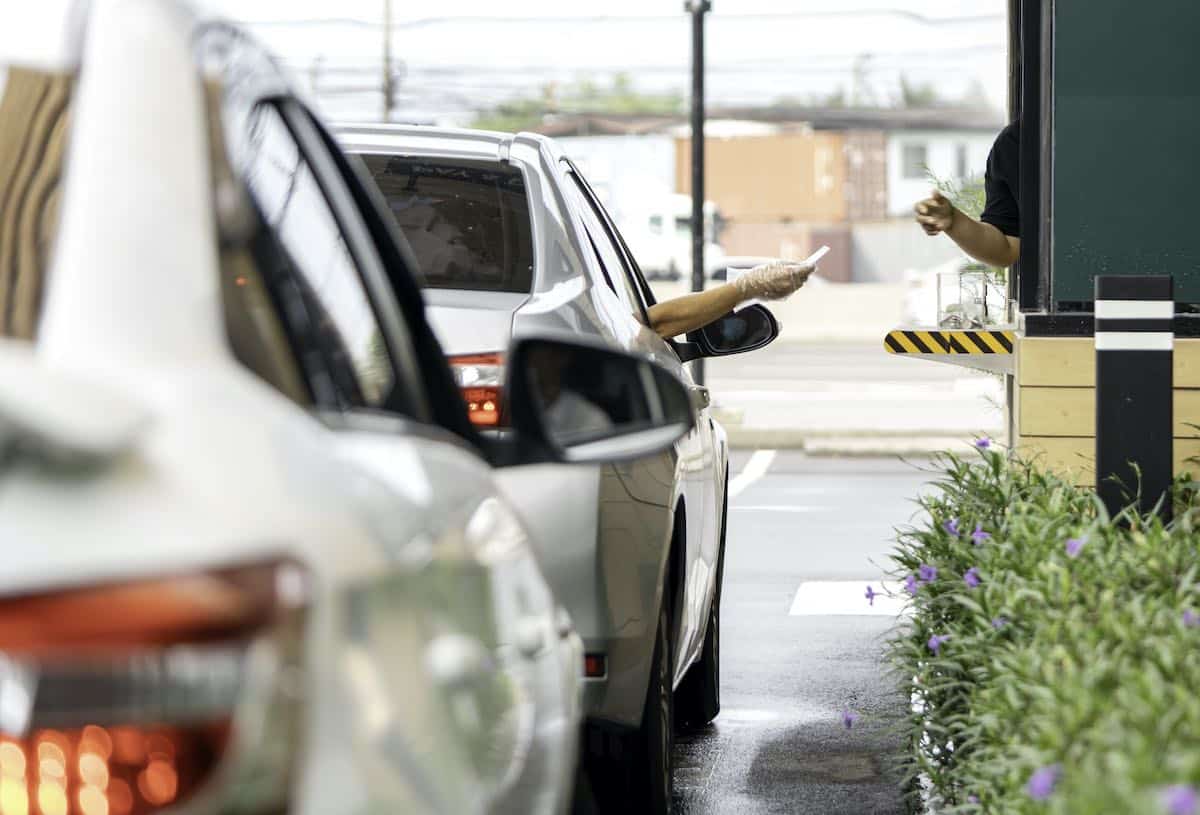Even prior to the COVID-19 pandemic, the drive thru held a valuable place in the quick-service restaurant ecosystem, but in 2020, off-premises dining rose to even greater prominence—a trend which still persists in 2021.
Here, drive-thru experts Rachel Barnes, director of business development, and CJ Mays, chief strategy officer for Uni-Structures, discuss the biggest trends restaurants will see in the drive thru in the coming year.
1. Drive-thru infrastructure is a must
With this heightened awareness of the drive-thru customer’s experience, restaurants are making investments in infrastructure that helps them bring the welcoming brand experience they are known for inside out to the drive thru.
Many brands have included canopies at their order stations and windows to protect guests and employees from the elements, and some have taken it further by investing in larger canopies placed farther back in the drive-thru lane to support line-busting efforts now that more business is moving outdoors.
“Canopies give you a lot more adaptability and customization potential while enhancing the face-to-face experience you provide,” Barnes says. “Larger canopies give more cover from rain and from direct sun. They’re also hard to miss, even from the road, which tells your customers that you’re adaptable and paying attention to customer service.”
While some leaders might worry about the potential for infrastructure, such as canopies and clearance bars, to be damaged by drivers, Uni-Structures, inventers of the original self-return technology, can help ensure the drive thru keeps functioning even if elements are hit.
Mays says that for brands that aren’t ready to spring for large canopies, even smaller ones can achieve a similar effect with less up-front cost.
Mays also notes that brands such as Chick-fil-A and Zaxby’s have started using larger drive-thru windows that can also function as doors, allowing employees to take orders to multiple cars at once to boost speed of service.
Additionally, in today’s competitive job market, both Barnes and Mays note that these features enhance the employee experience by improving working conditions and demonstrating that brands care about their teams, which could ultimately make restaurants more attractive employers.
2. Make room for express ordering technology
When implementing changes to the drive thru, it’s crucial to remember that the ways consumers now interact with restaurants have changed. Though many brands experimented with mobile apps and online ordering ahead of the pandemic, adoption rates grew significantly over the past 16 months, and consumers are unlikely to give them up, even in a post-pandemic world.
“We’re seeing brands, such as Chipotle, embrace mobile pick-up lanes in their drive thrus to expedite service for those who order online,” Mays says. “Many brands, like Dunkin’ may soon offer a hybrid model in which one lane is for traditional drive thru while a second is for picking up app orders. I think even once people transition back to the office, you’ll see a lot of engagement with express lanes and app orders during the lunch break when employees don’t have much time to sit in the drive thru.”
Barnes also cautions that while third-party delivery usage might decrease post-pandemic, these services will still be part of the equation long-term, and it will be important to include designated areas or lockers for third-party pickup orders so as not to clog up drive-thru lanes.
3. Drive thru isn’t going away, but it is changing
Though drive thru was already a key revenue driver for many quick-service chains, its importance has grown amid the pandemic, and this is unlikely to change anytime soon.
“Prior to the pandemic, drive thru accounted for about 70 percent of quick-service revenue,” Barnes says, “but in the last year, drive thrus have become even more vital to a restaurant becoming and staying relevant.”
Yet with so much attention being paid to the drive thru, restaurants have had to focus their energies on improving the experience. Barnes says this can involve making sure the drive thru is clean to mitigate diners’ health-related fears, while Mays notes this can mean investing in the customer experience.
“There is the customer service push,” he says. “Now that in-store has been stopped or slowed, drive thru is emulating counter service to increase speed, which can include everything from opening more drive-thru lanes to handle the volume to putting more employees in the drive thru to direct traffic and take orders with iPads.”
Meanwhile, Barnes notes some brands have also adopted service booths, where an employee might take orders or process payments at a stand mid-way through the drive-thru line, rather than using the traditional pay-at-the-window method.
Regardless of what the future holds, there is no question that the pandemic has had major impacts on the quick-service industry and on the drive thru. And no matter how consumer needs and preferences change, Mays says the key to drive thru success will be to listen and be ready to support the needs of customers.
Barnes agrees and says the right partner can help brands prepare for an uncertain future.
“I would urge people to seek out partners that are willing and able to take a consultative approach and aid in the development of drive-thru programs,” Barnes says. “At Uni-Structures, we are concept to install, meaning we can do it all or find somebody who can, so you never have to leave us. We really feel for restaurants now and do everything we can to make sure drive thrus are up and running to ensure revenue isn’t lost. We’re ready to help, no matter what the challenge is.”
To learn more about how you can prepare your drive thru for the future, visit the Uni-Structures website.
By Peggy Carouthers













